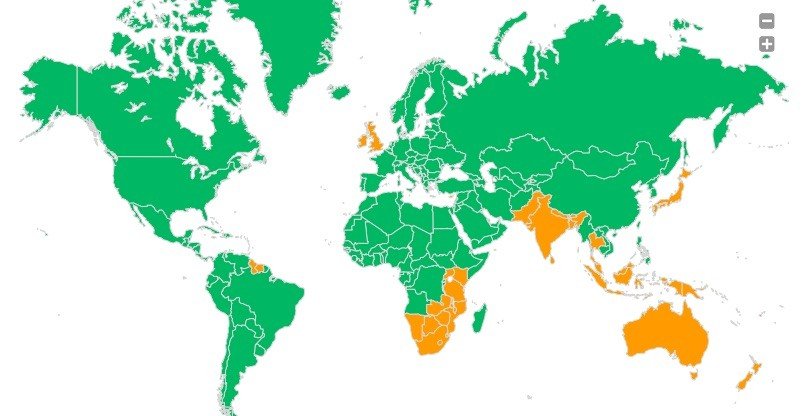Do you know what Asian Tigers are? Do you know why Japan is not part of the Asian Tigers? What role did Japan play in this story? In this article we will talk a little about the Asian tigers.
We are not talking about the tigers in the photo, but a name given to a group of countries that are called Asian tigers. Yes, let's talk about history and economics.
Índice de Conteúdo
Who are the Asian Tigers?
In the 1980s, some countries experienced high and sudden economic growth based on aggressive tactics to attract foreign capital such as tax exemptions and cheap labor.
For this aggressiveness the countries were named Asian Tigers. You Asian tigers are made up of the following countries:
- Hong Kong;
- South Korea;
- Singapore;
- Taiwan;
Oh? But where is Japan? Japan is not part of the Asian tigers but it played an important role in this story. At that time Japan was already a very developed country, it was the main propellant that helped to form these tigers.

How did the Asian tigers come about?
After Second World War Japan has entered a major recession. To combat this, the Japanese government began investing heavily in public works and trying to force a reduction in the interest rate to encourage new investments in the country.
Favored by the USA, Japan had rapid economic growth, accompanied by a policy of birth control and an increase in the educational, technological and financial standards, which allowed it to achieve a great commercial projection.
Some factors that helped Japan's growth:
- Japan used as much space as possible to cultivate and plant;
- The government stimulated productivity by buying all agricultural production and then reselling it.
- The development of agriculture in underdeveloped countries;
- The fishing activity;
- Investment in scientific research and technological development;
- The import of raw materials and sources of energy;
- The specialization of Japanese labor, which, being abundant, is relatively cheap;
- The use of advanced technology;
- Great investment in the Japanese industry;
There are countless other factors not mentioned that contributed to the growth of Japan, and its influence to other Asian countries.

Asian Tigers and Japan
From the 1980s onwards, some territories in the Malayo-Asian Pacific began to show high rates of economic growth and influence on the world market, which is why they are called Asian tigers.
The Asian country that started this rapid cycle of growth was Japan, with a successful land reform, followed by a rapid increase in farmers' incomes, which created a local market for new factories.
Japan acted not only as a stimulus, but also as an example. The immense and uninterrupted expansion of the Japanese economy was decisive in creating a dynamic market in the entire surrounding Pacific area.
Union relations in these countries follow the Japanese model of cooperation between capital and labor, submitting unions to the interests of companies, encouraging worker loyalty to the boss and competition between workers.
Other factors that favored the development of Asian Tigers.
- Foreign capital investment, from Japan and the USA;
- Exploitation of relatively cheap labor force;
- More balanced income distribution in relation to other capitalist countries;
- Cooperation and transparency of States;
- Economies primarily focused on the foreign market;
- Confucian ethics – establishes a socioeconomic model that emphasizes social balance, group conscience, hierarchy, discipline and nationalism;
It was because of Japan that some countries in Asia are known as Asian tigers.
The article is still halfway through, but we recommend also reading:
Videos about Asian Tigers
To finish this article, we will leave some videos talking more about Asian tigers. I hope you enjoyed the article, if you liked it share and leave your comments. Thanks!






